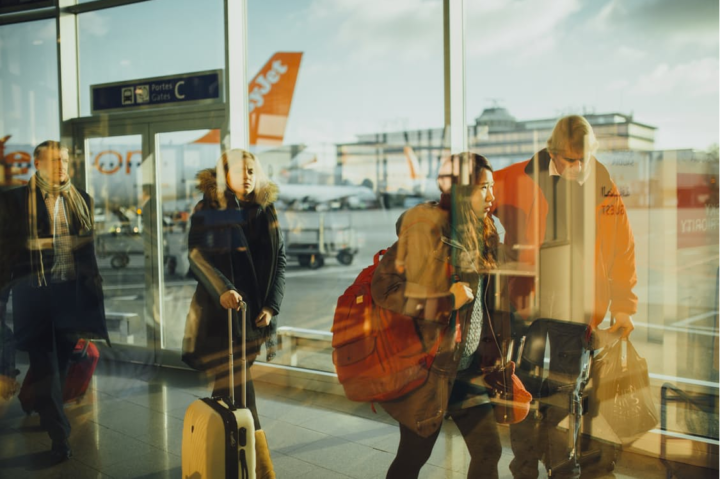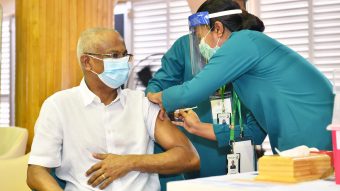
Almost 1 Billion international tourists in the 1st nine months of 2016
[vc_row][vc_column][vc_column_text]Statistics by the United Nations World Tourism Organisation’s World Tourism Barometer has revealed that world welcomed 956 million international tourists between January and September 2016.
This is a 4% increase compared to the same period in 2015, where 2016 saw 34 million tourists travelling over the same period.
According to the report, Demand for international tourism remained robust in the first nine months of 2016, though growing at a somewhat more moderate pace. After a strong start for the year, growth was slower in the second quarter of 2016 to pick up again in the third quarter of the year.
While most destinations report encouraging results, others continue to struggle with the impact of negative events, either in their country or in their region.
Regional Results
The data analysed by the UNTWO World Tourism Barometer indicated that Asia and the Pacific led growth across the world regions with international tourist arrivals (overnight visitors) up 9% through September.
All four sub-regions shared in this growth, with the Republic of Korea (+36%), Vietnam (+26%), Japan (+24%) and Sri Lanka (+15%) in the lead.
In Europe, international arrivals grew by 2% between January and September 2016, with solid growth in most destinations. Nonetheless, double-digit increases in major destinations such as Spain, Hungary, Portugal and Ireland were offset by declines in France, Belgium and Turkey.
As a consequence, Northern Europe grew by 6% and Central and Eastern Europe by 5% while results were weaker in Western Europe (-1%) and South Mediterranean Europe (+0%).[/vc_column_text][/vc_column][/vc_row][vc_row][vc_column][vc_single_image image=”11879″ img_size=”large”][/vc_column][/vc_row][vc_row][vc_column][vc_column_text]Maldives
Indicators published by the Ministry of Tourism show a 6.7% increase in tourist arrivals to the Maldives, during the first nine months of 2016, and an 11.4% increase in the first ten months of 2016. Total tourists arrivals for 2016 was at 1,062,489 which is a 3.6 percent increase compared to 2015.
The increase in arrivals may have been attributed to the increase in operational tourism facilities available for visitors, including 114 resorts, 13 hotels, 58 guest houses and 63 safari vessels, which had a combined bed capacity of 28,052 beds by the end of October 2016.
The average occupancy rate during the first 10 months of 2016 fell by -1.1% largely contributed by the 2.3% decline in the occupancy at tourist resorts and 0.6% decline in the occupancy of safari vessels. Although there was 1.8% increase in hotel, 6.6% increase in guest house occupancy, this increase was not enough to offset the average decline in occupancy of tourist facilities in Maldives during the first 10 months of 2016.
2016 kicked off with tourists spending an average 5.6 days in tourism facilities, and had a steady increase with tourists spending and average 6 days in the month of March. However, June, July and August showed decreases to 5.3 days, hence the average no. of days spent in Maldives by tourists during the first 10 months of 2016 average at 5.6 days, a 0.1% decrease when compared to the same period of 2015.[/vc_column_text][/vc_column][/vc_row][vc_row][vc_column][vc_single_image image=”11880″ img_size=”large”][/vc_column][/vc_row][vc_row][vc_column][vc_column_text]Strong Demand for outbound travel
UNWTO Barometer data suggests that the great majority of leading source markets in the world reported increases in international tourism expenditure during the first three to nine months of 2016.
Among the top five source markets, China, the world’s top source market, continues to drive demand, reporting double-digit growth in spending (+19%). Likewise, robust results come from the United States (+9%), which benefited many destinations in the Americas and beyond. Germany reported a 5% increase in expenditure, the United Kingdom a 10% increase, and France 3% growth.
Beyond the top 10, eight other markets reported double-digit growth which includes; Egypt (38%), Spain (+19%), India (+16%), Thailand (+15%), Ireland (+12%) and Norway (+11%).
Of these strong outbound source markets, China dominated the largest percentage of tourist arrivals to Maldives, with 27% of the total market share. The large number of Chinese tourists visiting Maldives, puts Asia and the Pacific in the top region of tourist arrivals in the Maldives, making 47.7% of the total tourist arrivals within the first 10 months of the year.
Europe leads in second, closely with the Asia Pacific region, with a 43.6% share of the total arrivals. Most arrivals from Europe came from Germany (8.3%), United Kingdom (8.0%) and Italy (5.2%).
Prospects remain positive
The UNWTO Confidence Index suggest that prospects for 2016 remain positive. The members of the UNWTO Panel of Tourism Experts are confident about the September- December period, mostly in Africa, the America and Asia and the Pacific. Experts in Europe and the Middle East are somewhat more cautious.
Note:
Results by the UNWTO World Tourism Barometer reflect preliminary data reported to date and are subject to revision.
Data on tourist arrivals to Maldives, provided by Maldives Immigration to the Ministry of Tourism.
Operational capacity for guest houses and safari vessels based on the number of establishments that submitted data.[/vc_column_text][/vc_column][/vc_row]






